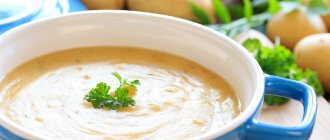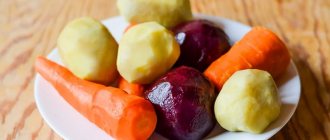A milk-based diet is a monotonous but effective food regimen. It consists of drinking milk, dairy products with a small amount of other food. Typically, all types of this diet program are followed for no longer than 7 days. Their disadvantage is the radicality of dietary changes and the risk of health complications. The advantage is rapid weight loss. The dairy diet requires compliance with the drinking regime, since liquids accelerate weight loss and remove impurities from the body.
What foods should you avoid?
In order for the baby to receive enough nutrients, vitamins and minerals with milk, the mother should adhere to a balanced and varied menu for the nursing mother. Food must undergo strict quality control, be hypoallergenic, fresh and environmentally friendly. Products containing preservatives, artificial colors, flavor enhancers and other chemical additives should be excluded from the diet.
While you are breastfeeding, new products should be introduced into your menu gradually, preferably one new product every two weeks - so that you can observe the child’s well-being, his mood, the condition of his skin and stool.
There are also general recommendations about what foods a nursing mother can include in her menu, and what she will have to give up for now. What are these requirements?
Breastfeeding: prohibited foods
- Alcohol
- Coffee, cocoa, strong tea
- Chocolate
- Citrus and exotic fruits
- Spicy foods, herbs (mint) and seasonings
- Raw onion and garlic
- Soy products
- Seafood, caviar
- Mushrooms
- Chicken eggs in case of allergies in a baby
- Peanut
- Honey
- Vegetables, fruits and berries of orange and bright red color
- Marinades, smoked meats, canned food, fermented products (kvass, cheeses, sauerkraut)
- Carbonated drinks
- Products containing food additives, colorings and preservatives
- Be careful with foods that cause gas (all types of cabbage, legumes, grapes, black bread)
Some of these products have a stimulating effect on the child’s nervous system and interfere with normal sleep; others are difficult to digest by the still imperfect digestive tract; still others can cause food intolerances and allergies. Fortunately, there are many more foods that are allowed on the menu of a nursing mother and her baby, and all of them can be gradually introduced into the diet as the baby grows.
As a rule, a nursing mother's diet changes slightly from month to month - along with the needs of the child's growing body.
Milk-curd diet
According to some experts, cottage cheese contains more protein than meat. In addition, the proteins present in cottage cheese are much easier to digest than the proteins contained in meat.
With regular consumption of cottage cheese, the body receives many amino acids that are necessary for its proper functioning. Cottage cheese also contains a high percentage of calcium - a “building material” for bones and teeth. Its regular presence in the diet helps fight osteoporosis, i.e. thinning of the bones.
Cottage cheese is a suitable part of weight loss diets. This is due to the high content of these amino acids. In fact, the body suffering from unbalanced nutrition on a one-sided diet tends to consume muscle nutrients, resulting in loss of muscle mass. With cottage cheese this risk is absent because this product itself is a source of amino acids.
Cottage cheese supplies the body with a number of vitamins, such as A, B6, B12, C, D, E. In addition to calcium, it also contains potassium, magnesium, healthy unsaturated fatty acids omega-3 and omega-6. Its beneficial properties are not lost even after heat treatment.
Example of a curd diet menu:
Day 1:
- Breakfast: cottage cheese + nuts + 1 tsp. honey
- Morning snack: apple.
- Lunch: pasta with stewed corn, cottage cheese.
- Afternoon snack: egg + 1 tbsp. l. cottage cheese + cucumber.
- Dinner: baked root vegetables with cottage cheese.
Day 2:
- Breakfast: whole grain bread with cottage cheese + paprika.
- Morning snack: orange.
- Lunch: jacket potatoes + cottage cheese + sour cream.
- Afternoon snack: 1 tbsp. milk.
- Dinner: baked mushrooms stuffed with cottage cheese.
Day 3:
- Breakfast: whole grain bread + margarine + cottage cheese.
- Morning snack: pear.
- Lunch: pancake stuffed with cottage cheese and fruit.
- Afternoon snack: cottage cheese + walnuts.
- Dinner: salad of tomatoes, peppers, cucumbers, sprinkled with cottage cheese.
Day 4:
- Breakfast: cottage cheese + grapes.
- Morning snack: kiwi.
- Lunch: potato casserole with cottage cheese.
- Afternoon snack: fermented milk drink.
- Dinner: salad of boiled chicken, cottage cheese, pistachios.
Day 5:
- Breakfast: whole grain bread + cottage cheese.
- Morning snack: 2 tangerines.
- Lunch: cottage cheese + fruit + sesame seeds.
- Afternoon snack: cottage cheese + tomatoes.
- Dinner: cottage cheese + dried fruits + nuts + 1 tsp. honey
Mom's nutrition: the first weeks
Immediately after childbirth, nutrition for a nursing mother will not be varied. Don't worry, this is temporary! And even with a limited range of products, you can create an interesting menu for yourself. Take a close look at the list recommended to you by your doctor and choose three or four options for breakfast, lunch and dinner. Pediatrician-approved products are your personal construction kit.
In the first 10 days, the mother pays close attention to her baby’s reactions to feeding. That is why at this time the menu is limited to products that are less likely to cause various allergic reactions in a child. Baked apples, bananas or pears, buckwheat and barley porridge, and vegetable soups are good for the first 10 days. Unrefined oils are best suited as seasonings: corn, olive, sunflower.
Ask the rest of your family to follow your diet during these three to four weeks so that you don't feel lonely and other people's delicacies don't deprive you of your will. And preparing three or four versions of dishes (for yourself and for others) is not the best activity for the mother of a newborn.
After 10 days, you can add fermented milk products (kefir, yogurt, cottage cheese, fermented baked milk) and vegetables (potatoes, carrots, beets, light pumpkin) to the menu. They are best baked, steamed, stewed or boiled.
In the second month after birth, the mother of an infant can gradually return eggs (preferably quail), grain bread or bread with bran (a little and only if you are sure that you do not have gluten intolerance), unsalted cheeses, durum wheat pasta, dried fruits ( dates, dried apricots, prunes), biscuits. And you should still avoid black tea and coffee, alcohol, sugar and large amounts of salt.
In the first two months after giving birth, it is very useful to keep a food diary: hang a table in the kitchen and enter information about what exactly you ate for breakfast, lunch and dinner, as well as during snacks and spontaneous raids on the refrigerator.
When should you not follow a dairy diet?
If you are allergic to milk, dairy products, or lactose, do not try a dairy diet. If you have health problems, consult your doctor about the advisability of following it. For a weakened body, losing weight on milk can be dangerous, so don’t take risks.
What can nursing mothers eat from 0 to 2 months?
- Apples, pears, bananas (baked)
- Cereals (buckwheat, barley, corn, rice)
- Soups - vegetarian
- Quail eggs
- Cereal products: durum wheat pasta, grain and bran bread
- Drinks: herbal or weak black tea, fruit drinks, dried fruit compotes
- Fermented milk products (kefir, plain yoghurts, cottage cheese, fermented baked milk)
- Steamed vegetables (potatoes, carrots, beets, light pumpkins)
- Quail eggs
- Biscuits
Fermented milk products for weight loss
Many fermented milk products are the basis of the diet. Cottage cheese, kefir, whey, fermented baked milk, and natural yogurt are useful for weight loss. They contain a small amount of calories (no more than 150 per 100 g) and are rich in animal proteins. The recommended fat content of fermented milk during a diet is no more than 5%. You should not choose low-fat products - they fill you worse and provoke a feeling of hunger.
Kefir diets
Experts have developed many types of kefir diets. They differ in duration (from 1 to 14-15 days) and product range. Among the popular ones:
- kefir-apple;
- on buckwheat and kefir;
- cucumber-kefir;
- egg-kefir.
The advantages of kefir diets include quick effect, cleansing of the body and short duration. Disadvantages include the fragility of the result and psychological discomfort due to strict dietary restrictions.
Cottage cheese for weight loss
To lose weight, you should choose natural cottage cheese without additives, 2-5% fat. The product can be consumed with berries, dried fruits, and fruits. It is allowed to supplement the diet with chicken eggs (1-2 pieces per day), low-fat broths, and vegetables. Cottage cheese can be consumed either raw or used to prepare low-calorie casseroles and cheesecakes. Daily calorie content should not exceed 1200-1300 kcal. Popular diets include:
- curd-kefir;
- curd and fruit;
- mono-diet on cottage cheese (for 1, 3, 7 days).
Nutrition for a nursing mother: from 2 months to six months
Starting from 3 months, you can gradually introduce some foods that were previously prohibited into your diet. After consuming each of them, you need to carefully monitor your baby’s reaction: if he has even a hint of an allergy, this product should be excluded and tried again in about a month. It is possible that the allergic reaction was simply a symptom of the immaturity of the baby’s digestive tract. Now you can add to your menu:
- Pearl barley, oatmeal, wheat and semolina porridge;
- Fresh fruits (not tropical and not containing red pigment);
- Juices (from green and yellow apples, soft pumpkin, carrots or beets);
- Sour cream;
- Morse made from blueberries, lingonberries, cranberries, rose hips.
You can also try to gradually include fresh onions and nuts in your diet (except pistachios and peanuts, which should be tried with caution, a couple of pieces a day). But the listed products will affect the taste of the milk, which the baby may not like. Therefore, it is important to know when to stop and be attentive to the behavior of the baby. Although scientists say that a baby’s eating habits begin to form in the womb: when the baby gradually swallows amniotic fluid, then his first acquaintance with his mother’s diet occurs.
Can I drink milk?
You should still be careful when handling cow's milk protein, as it often causes an allergic reaction in children. It is this that can cause abdominal pain in a child, so you should be careful when handling cow's milk products. Alternatives include goat milk products, including cottage cheese and plain yoghurts.
In addition to proteins, fats and carbohydrates, milk contains some vitamins and microelements, and its especially useful components are calcium and phosphorus. If, having included milk in your diet, you have not noticed a negative reaction in your baby, you can continue to consume it. Fermented milk products, such as kefir and cottage cheese, are especially useful now. A convenient option may be Agusha curd, rich in calcium and vitamin K2, which is necessary for the absorption of calcium by the bones.
At 4–6 months of life, the baby already tries his first complementary foods. At this point, you have generally learned how he reacts to milk composition based on changes in your diet. Now you can gradually begin to expand your menu by introducing beans, potatoes, mild cheeses and fish.
But remember that the meat of some types of fish may have a high content of heavy metals. Their concentration in the meat of shark, marlin and swordfish can significantly exceed the permissible limit; such fish should be completely excluded from the diet. Varieties such as mackerel, pink salmon, sockeye salmon, trout, and salmon can cause allergies. From the 6th month, you can begin to gradually introduce fish into the menu, but be sure to carefully monitor the baby’s reactions.
And of course, you should not eat raw fish, sashimi, or sushi. The pathogens with which she can be infected are extremely dangerous for both mother and baby, and medications that destroy the infection are incompatible with breastfeeding.
Treatment of lactase deficiency
Only those cases of lactose intolerance that are clinically manifest require treatment. The main principle of treatment is a differential approach to therapy depending on:
- on the age of the patient (full-term or premature newborn, infant, young, older, adult patient);
- degree of enzymatic deficiency (alactosia, hypolactosia);
- genesis of fermentopathy (primary or secondary).
The main treatment for patients with absolute lactase deficiency (alactasia) is a complete abstinence from consuming milk and dairy products. In parallel, therapy is carried out aimed at correcting intestinal dysbiosis, replacement therapy (use of lactase drugs: lactrase, thylactase, lactaid) and symptomatic treatment.
In secondary lactase deficiency, the focus is on treating the underlying disease. Reducing the amount of lactose in the diet is temporary until the small intestinal mucosa is restored.
In patients with primary or secondary lactase deficiency, the degree of restriction in the consumption of milk and dairy products is strictly individual, since some patients cannot tolerate only milk, but are able to eat fermented milk products with a low lactose content. And patients with a slight degree of hypolactasia can consume even small amounts of fresh milk (up to 100–150 ml per day) without harm to health. In such cases, it is allowed to take milk not on an empty stomach, slowly, in small portions no more than 1-2 times a week. Restrictions are lifted when the patient's tolerance to dairy products increases.
Keep a food diary!
The patient needs to keep a food diary. Thanks to the recordings, you can get answers to two important questions:
- What particular product caused flatulence and diarrhea?
- How much lactase should be added to foods containing lactose?
In order to identify the patient's reaction to milk, it is recommended to carry out test loads of milk or lactose. Training of the corresponding enzyme systems is also indicated by administering small amounts of fermented milk products when the sick child or adult patient is in satisfactory condition. An indicator of an increase in the threshold of tolerance to milk is the absence of intestinal disorders.
Carefully!
In the food industry, lactose is used in the production of many food products. In addition to milk and dairy products, lactose is present in packaged sausages, packaged soups, ready-made sauces, chocolate, and cocoa powder. It is used to increase the viscous properties of the product and ease of use. Lactose is 30–35% less sweet than sucrose; it is added in large quantities. When baked, milk sugar turns brown, so it is an invariable ingredient in French fries, croquettes, confectionery and baked goods.
Lactose is also widely used in the manufacture of pharmaceuticals and is one of the main components of flavors, flavor enhancers, sweeteners, etc.
Read food and drug labels.
Nutrition for a nursing mother: from 6 to 12 months
At six months, mother can gradually expand her diet, but preference should still be given to boiled, stewed, steamed or baked dishes. Try small quantities of fruits that you have previously abstained from. And it is better to conduct such experiments in the morning - so that during the day you can notice the baby’s reaction if it occurs. What you can try to include in your diet for 6 to 12 months:
- Meat (beef, chicken)
- Beans and legumes
- Boiled and stewed fish
- Seafood
- Zucchini, squash
- Cauliflower, cabbage, Brussels sprouts, broccoli (with caution)
- New fruits (moderate)
- Any nuts (except peanuts)
- Garlic
In the second year of the child's life, the mother returns to her normal diet - of course, taking into account the baby's preferences, if she continues to breastfeed.
Photos before and after
In addition to reviews, I also selected for you photos of those who were on a milk diet. Just admire these results. They say more than any promises.
To avoid allergies
While you are breastfeeding, you should avoid foods that cause allergies in your baby. Be sure to monitor your baby's reactions and observe how changes in your diet affect your baby's behavior, the condition of his skin, as well as the frequency and nature of stool.
There are several food groups that are best excluded from your diet during feeding.
- First of all, these are coffee, tea, alcohol, carbonated drinks and chocolate.
- Also on the list of prohibitions are exotic (especially citrus) fruits, soy derivatives, seafood, raw and lightly salted fish and products containing various chemical additives (preservatives, flavor enhancers).
- Sweet, fatty desserts should also be avoided while breastfeeding.
If a baby is predisposed to allergies, the mother should be especially careful about her diet. In this case, you need to limit your consumption of cow's milk protein. If a mother abuses these products, the baby may develop severe allergies, bloating and other unpleasant symptoms.
It is worth reducing the consumption of another protein - gluten, which is present in all cereals except rice, buckwheat and corn.
In children with a hereditary predisposition to allergies, a pigment that turns vegetables and fruits red often causes a reaction. Therefore, you should be careful about red fruits and berries in your diet.
Most often, allergies occur to cow's milk protein, chicken eggs, nuts and fish (more than half of all cases).
To choose the right products for her menu, a nursing mother can use the funny “traffic light rule”: the red, yellow and green colors of the products correspond to the traffic lights - from prohibitive red to permissive green.
Some decoctions, like coffee, can cause a negative reaction in a baby. This is ginseng (stimulates the nervous system), infusion of hawthorn (lowers blood pressure), sweet clover (contains substances that impair blood clotting), and mint.
Any new product is introduced into the diet of a nursing mother no more than once every two weeks.
Advantages and disadvantages of the dairy diet
According to reviews and results of the milk diet for weight loss for 7 days, its biggest advantage is rapid weight loss. As part of its observance, a person gets used to eating regularly and consuming enough liquid. Thanks to dairy products, the body receives enough calcium.
Like any other one-sided food regimen, the dairy diet is characterized by a deficiency of vitamins, fiber, and minerals. Due to low calorie intake, frequent feelings of hunger and exhaustion occur. As a result, nervousness and frequent bad mood develop. A common side effect of a milk diet for weight loss (according to many who are losing weight) is headache.
If you notice signs of allergies in your baby
It may happen that, despite all the mother’s efforts to follow a diet that is as safe as possible for the baby, it is not possible to protect him from allergies: the mother could treat herself to a strawberry during the summer season or a tangerine on New Year’s Eve. How do you understand that your child’s body is signaling that he or she has a food allergy? What are the signs of allergies?
- Skin redness
- Excessive dryness of the skin or, conversely, its wetting
- Child's anxiety
- Bloating, colic, vomiting
- Diarrhea or constipation
- Difficulty in nasal breathing
If several of the above symptoms appear, you need to carefully look at your diet and remove recently introduced foods from it. After all manifestations of allergies have disappeared in your baby, you can carefully check your list of foods consumed for the presence of allergenic ones (and exclude them for the entire time of breastfeeding), gradually begin to introduce foods in small quantities (no earlier than a month) and carefully monitor the reaction. baby. The dose can be increased every few days. If there is no reaction in the baby’s skin and gastrointestinal tract, we can conclude that the product is not dangerous for him, and calmly eat it (in reasonable quantities!).
Will eliminating milk help you lose weight faster?
You can drink milk while losing weight, we have already found out. Nutritionists advise not to give up such a healthy product. However, some people think that excluding it from the diet will help them lose extra pounds faster.
In fact, if you don’t get too carried away, then with or without milk, with regular moderate physical activity and an active lifestyle, you will definitely get the desired result. So why deny yourself your favorite product if even when consuming it everything will definitely go like clockwork.
Diet for mom figure
A few months after giving birth, if there are no contraindications, the mother can slowly begin to take care of her figure: do exercises, adjust her diet and gradually expand her diet - after all, the most strict period of the first weeks after birth is over.
As a rule, the weight gained during pregnancy gradually begins to fall off after the 3rd month, when the mother’s body has become accustomed to the new rhythm and provided proper nutrition. The process of breastfeeding itself contributes to this, as well as, of course, the new, busy schedule of the young mother.
If the weight does not go away, you should reconsider your diet and change something in it, but in no case resort to strict diets when feeding an infant - this can harm the baby! Nutrition should be varied, but balanced and as healthy as possible.
When feeding a mother who wants to lose weight, a mother's diet must include protein of animal origin, as well as fermented milk products (if the baby is not allergic to cow's milk protein), vegetables and herbs. Green leafy vegetables (spinach, sorrel, lettuce) contain a lot of calcium, vitamins, and microelements that promote recovery after childbirth, as well as the normal functioning of the gastrointestinal tract. Not too sweet fruits and berries of soft colors are an excellent source of vitamins and antioxidants; they can be included in the menu.
It is worth excluding vegetables with a high starch content from the diet, and moving the intake of slow carbohydrates (bread, cereals, pasta) to the first half of the day. The same applies to sweets, which are generally best removed from the menu for this period. An exception may be, for example, dry unsweetened cookies.
And of course, drink plenty of fluids! It not only helps maintain water balance, but also stimulates lactation, especially if it is a warm liquid: a cup of warm drink 10 - 15 minutes before feeding stimulates the release of oxytocin and causes a flow of milk.
Breastfeeding is a wonderful time when a new mother has the opportunity to change her eating habits, learn healthy recipes and lay the foundation for a new, healthier lifestyle for years to come. We are sure that a nursing mother will no longer be able to change some of the eating habits acquired at this time after stopping breastfeeding, because they are aimed at maintaining the health of both babies and their adult mothers. Take care of your health! A breastfeeding diet for weight loss can be delicious!
What kind of milk is suitable for the diet?
If you decide to follow a dairy diet, know that the No. 1 component of milk is milk fat, which is characterized by a high content of saturated fatty acids. Therefore, excess consumption (about 1 liter per day) of whole foods can lead to overweight and obesity. Cholesterol content depends on the percentage of fat. Whole milk contains on average 12 mg cholesterol/100 ml, semi-skimmed milk - 5 mg/100 g, skim milk - 3 mg/100 g. The recommended amount of cholesterol is 300 mg/day.
Types of milk and their fat content:
- whole - maximum 3.5% fat;
- semi-bold - 1.5–1.8% fat;
- low fat - at least 0.5% fat.
According to reviews of the milk diet and weight loss results, it is advisable to choose semi-fat or skim milk. But their disadvantage is the low content of fat-soluble vitamins. When consuming 1 tbsp. milk (250 ml) per day, it is not necessary to choose the low-fat version. 1 tbsp. semi-skimmed product has 475 kJ, which approximately corresponds to the energy contained in 50 g of cornspitz.
What about contraindications?
In any case, dairy drinks should not be abused, as the effect can be exactly the opposite of what was expected.
Indigestion, allergies, nausea, uncontrolled weight gain, vascular problems - this is not a complete list of problems that a person may encounter.
- But if it is not possible to give up dairy products, it is better to use yogurt, kefir or whey.
So, if you are planning to lose weight, then do not deny yourself the pleasure of drinking a glass of delicious milk. And sometimes you can use this product for a mono-diet. A liter of milk a day in small sips will improve your well-being, mood, immunity and, in addition, get rid of a kilogram of excess weight.
Drink your favorite product at the right time with the right products, don’t overuse it, and you won’t lose weight.
Dairy products Drinks
How to properly consume milk for weight loss?
If you decide to use milk when losing weight, do not take the first product you come across. Carefully study the packaging, pay attention to the fat content. The more fat in a product, the higher its energy value. But, unfortunately, there is also an inverse proportion - the higher the fat, the less milk protein. Consequently, losing weight is complicated on both sides.
“Light” products are also not suitable. Fat is a carrier of taste. If the yogurt does not contain it, the product is sweetened. In addition, the consistency of low-fat foods changes, which is why starch is added to them. And starches are hidden carbohydrates. Therefore, choose the golden mean, semi-skimmed dairy products for weight loss. There is no significant difference between them and low-fat milk.
Milk or “not milk”?
If, after considering the question of whether milk is ok on a diet, you decide to give it up, there is an alternative for you. In recent years, plant-based milk substitutes have become a hit. They are especially suitable for consumption in cases of lactose intolerance. For example, you can buy coconut, almond, soy milk. When choosing a substitute, pay attention to the composition. Often the first (i.e. most present) ingredient is water, followed by glucose syrup, fat, other flavorings, and the minimal amount of natural ingredient that you are buying the product for...
IMPORTANT! Informational article! Before use, you should consult a specialist.











